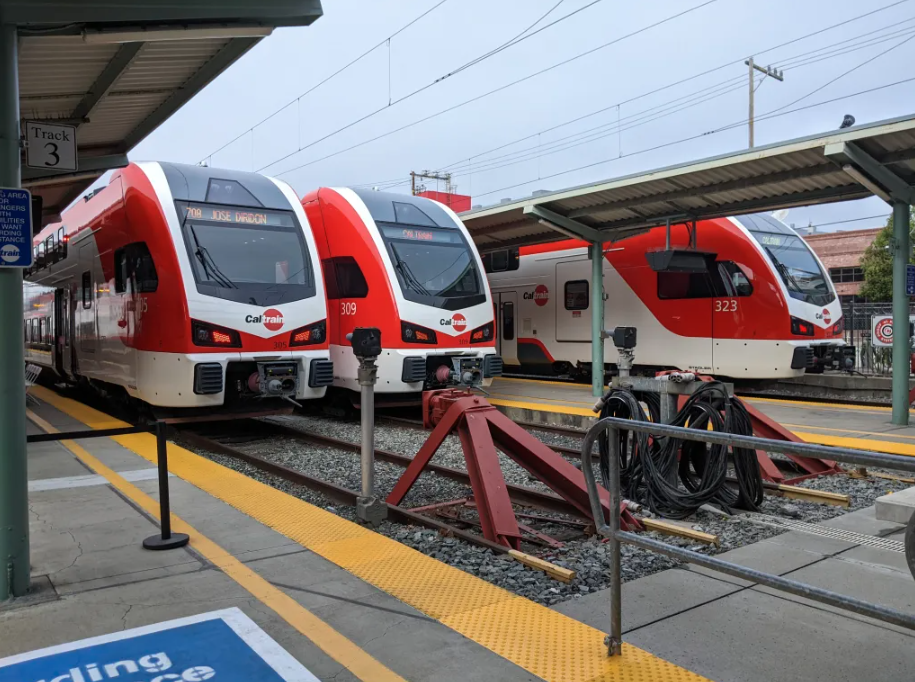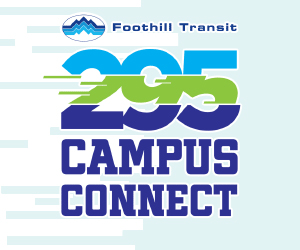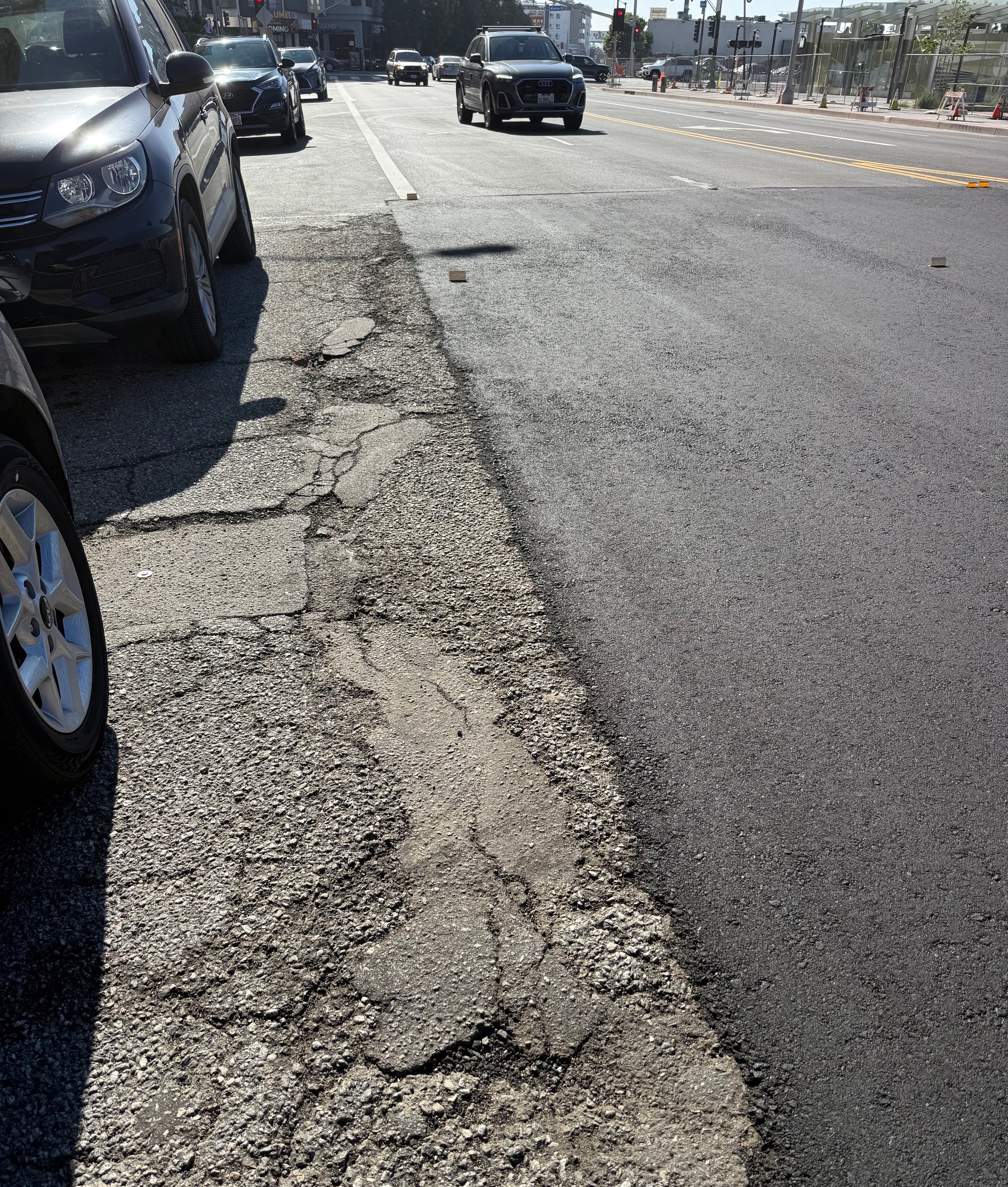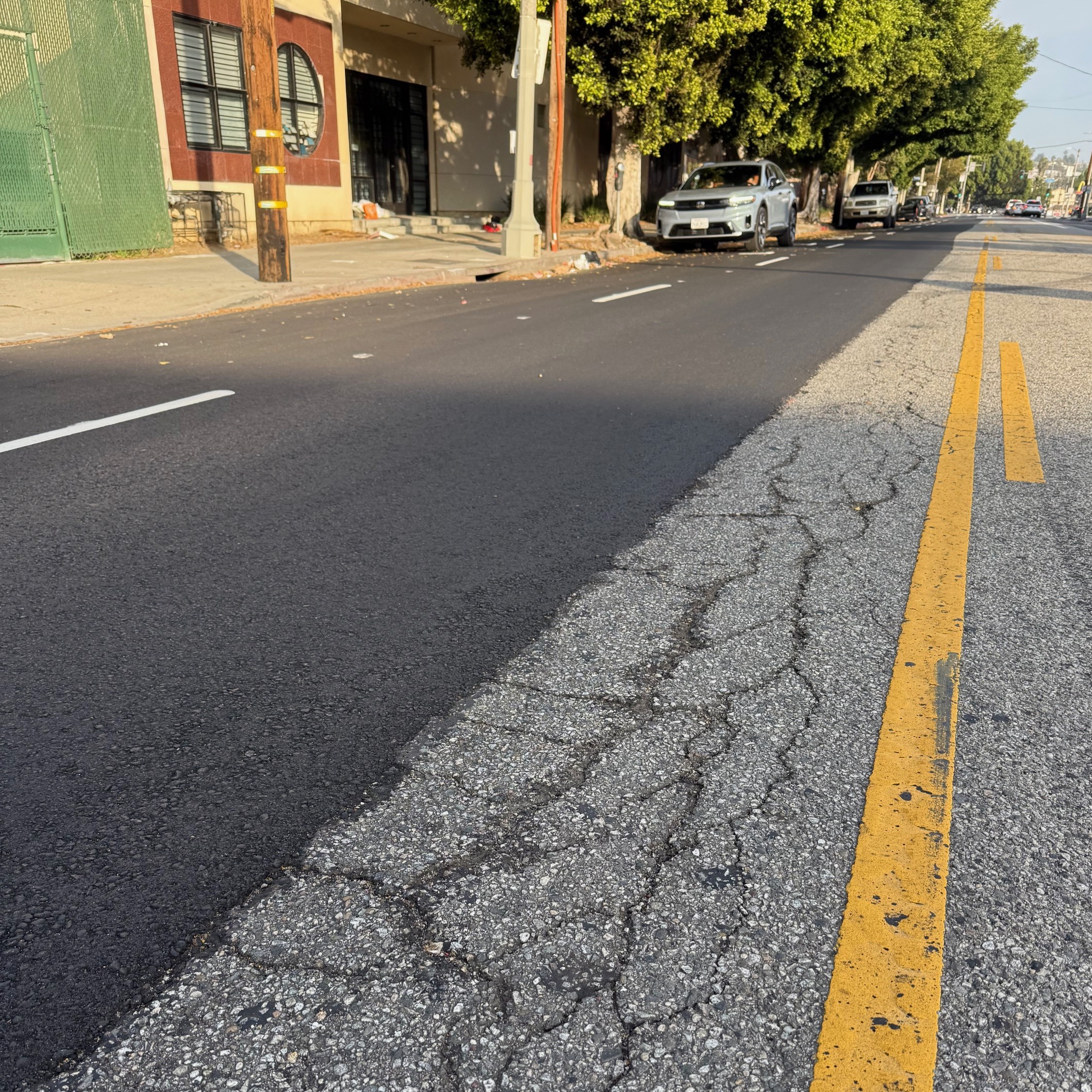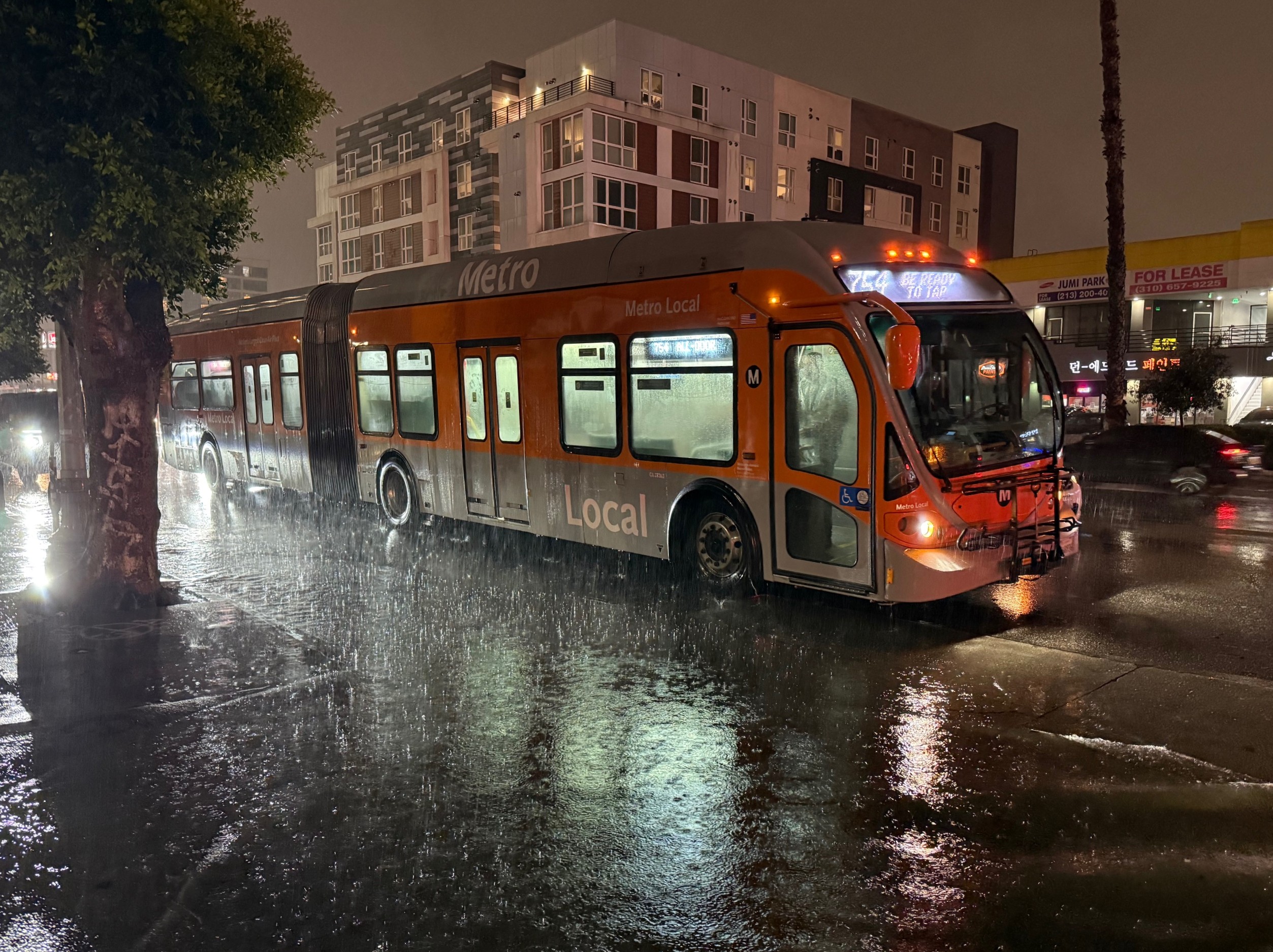If you haven't ridden the Bay Area's Caltrain lately, you may not be aware of their wildly successful electrification project. From San Jose to/from San Francisco, Caltrain service is all electric trains. Full electrified service started in September 2024.
Electrification there meant faster, more frequent, cleaner and quieter trains.
In just the first three months of electric service, Caltrain saw a 41 percent increase in ridership, with Sunday ridership doubling. In June, Caltrain reported a whopping 76 percent increase in ridership compared to a year earlier. Operating costs and energy costs are down.
Some readers may be wondering: what's the big deal with electric trains? Can't frequent diesel trains do the same thing?
No, they can't.
Electric catenary (overhead wire) power means that trains don't need to carry fuel. Transporting fuel means slower acceleration and deceleration. Electric trains also have access to way more power. They can accelerate to full speed within seconds of departing the station, much the way a subway or light rail train does. Caltrain produced the video below to illustrate, comparing a new electric train's acceleration out of a station to its older diesels:
@gocaltrain We can easily say, we know who won this race 🤭! Electrification coming soon⚡️ • #Caltrain #publictransit #mariokart #trains #Electrification #BayArea
♬ 123start - cyrusaho
The electric train is well underway before the diesel even clears the platform. That translates into enormous time savings over the course of a run with multiple stations. Electrified trains also accelerate faster out of curves, brake faster, don't pollute, and are much quieter and more reliable.
So why doesn't Metrolink jump on the electric train bandwagon?
Metrolink electrification is not a small undertaking. It took Caltrain seven years to electrify 50 miles on one multi-track corridor. Metrolink, on the other hand, runs on multiple corridors spread out over seven counties.

None of that means Metrolink shouldn't be actively planning for electrification, which is, without question, the future of passenger rail. Nevertheless, Metrolink recently posted a short video making fun of rail electrification.
The video claims that electrification is not feasible because "Metrolink operates on more than 500 miles of tracks. Nearly half of that is owned by other railroads."
That defies basic logic - if you own half, then you can start by electrifying some part of that 250+ miles of track you own.
Californians for Electric Rail (CalEletric) has already further debunked this reasoning. CalElectric has proposed starting on 130 miles of higher ridership corridors including publicly owned tracks on the Metrolink Antelope Valley Line and the San Bernardino Line, plus other tracks already slated for future High-Speed Rail (which is always electric).
The video also claims that Metrolink's shared tracks are different, because "Caltrain has a dedicated line where the only trains that operate along that area are Caltrain electrified systems." This is false; Caltrain shares stations with Amtrak and the ACE Commuter Rail service, which both run diesels under the wire every day. Union Pacific still runs freight trains on the Caltrain line too.

Metrolink took the video down after getting challenged by rail advocates over its inaccurate claims. However, the fact that Metrolink produced it at all is a worrying sign.
Rail operators in California, the East Coast, and all over the world are experiencing the benefits of electrification. Metrolink can, and should, do the same.
Metrolink electrification is going to take some time, some coordination, some funding, and will ultimately greatly benefit current Metrolink riders, and will draw many new riders to improved Metrolink services.
